I was very fortunate to recently visit South Africa and Zimbabwe after a veterinary conference. Since 100% of the pet owners we meet are animal lovers, I thought I would share some information and pictures about his incredible trip.
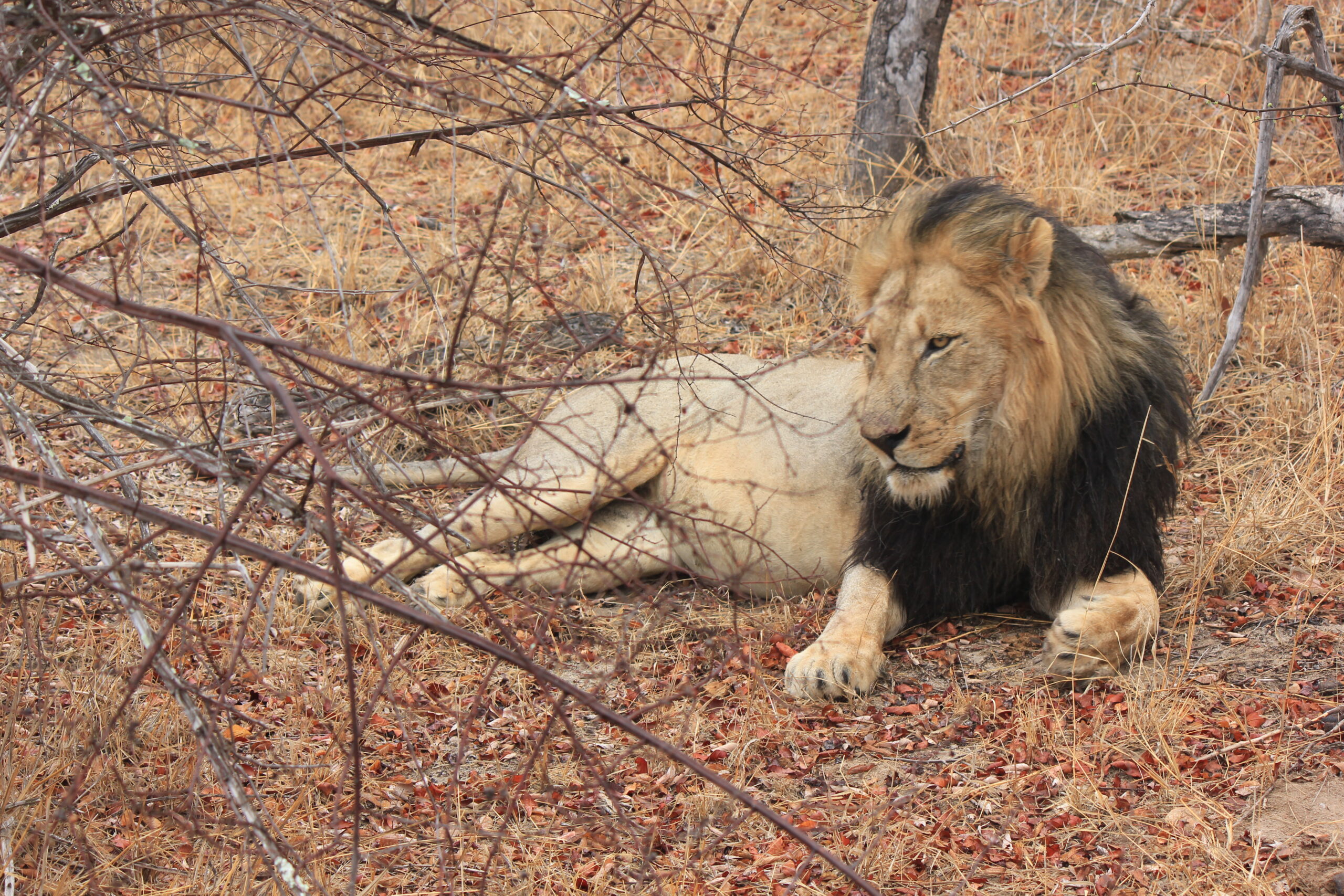
Lions symbolize power and grace.
South Africa offers a haven for these amazing creatures in protected reserves.
Beyond their royal appearance lies a fascinating world of behaviors, survival strategies, and challenges.
Let’s peek into the lives of lions in South Africa to uncover their incredible story.
A Family Affair: The Social Lives of Lions
Unlike other big cats, lions are unique in their social structure.
They live in groups known as “prides,” which are typically composed of lionesses, their cubs, and a few dominant males.
These prides are tightly knit communities, where members collaborate in hunting, raising cubs, and protecting their territory.
Lionesses are particularly cooperative, often nursing each other’s cubs and working together to rear the young.
Within the pride, male lions hold the mantle of leadership, though not without challenges.
Male “coalitions,” often consisting of brothers or unrelated males, frequently compete for dominance, battling rival males to take over prides and ensure their lineage.
However, not all male lions live within the structure of a pride.
In South Africa, some male lions live alone or in small groups, known as “nomadic males.”
And we were very lucky to see a few.
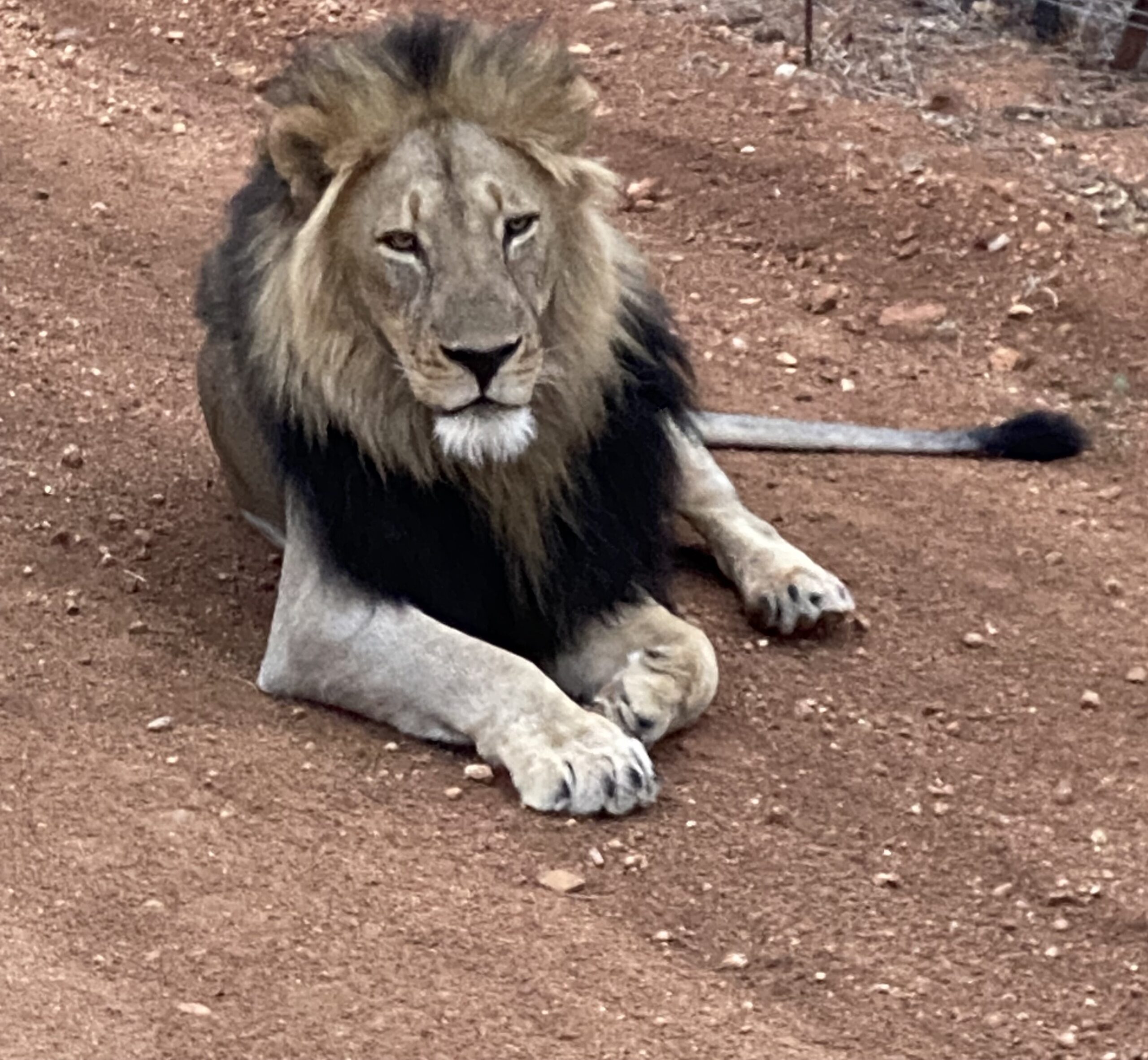
These lions are often younger males who have been ousted from their natal prides, or older males unable to maintain dominance.
What influences whether male lions form coalitions or live alone?
The abundance of prey and territory dynamics.
These lone or small-group males roam vast areas, waiting for opportunities to challenge pride leaders or establish new territories.
Masters of the Hunt
Lions are called apex predators, sitting at the top of the food chain.
Their hunting strategies are a blend of power, cooperation, and ingenuity.
While they are capable of reaching speeds of up to 50 mph (80 km/h), their strength lies in teamwork.
Lionesses lead the hunt, using coordinated tactics to bring down large prey such as zebras, buffalo, and antelopes.
They are primarily nocturnal hunters, using the cover of darkness to stalk and ambush their preys.
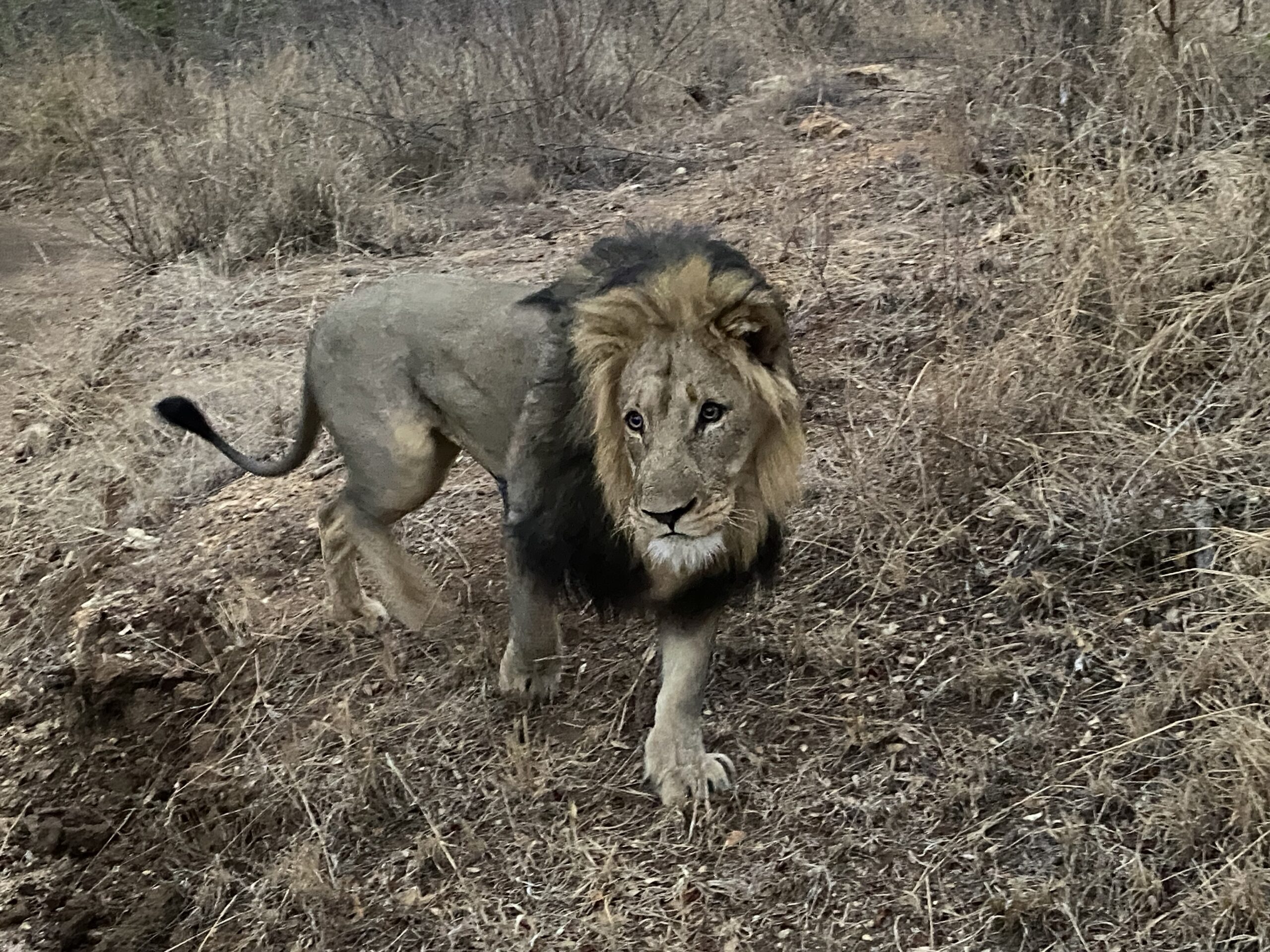
Despite their hunting prowess, lions are opportunistic and will scavenge when the opportunity arises.
They often steal food from other predators, like cheetahs and hyenas, showcasing their adaptability in the wild.
Majestic Physical Features
Male lions are easily recognized by their manes, which are more than just decoration.
The size and color of a mane indicate a lion’s age, health, and strength.
Darker manes are particularly appealing to lionesses, signaling a strong and capable mate.
Male lions can weigh up to 550 lbs (250 kg), making them the largest big cats in Africa.
Lions also have one of the most iconic sounds in the animal kingdom: their powerful roar.
This roar, which can be heard up to 5 miles (8 km) away, serves multiple purposes, from marking territory to locating pride members.
Each lion’s roar has a unique pattern, allowing individual recognition among pride members.
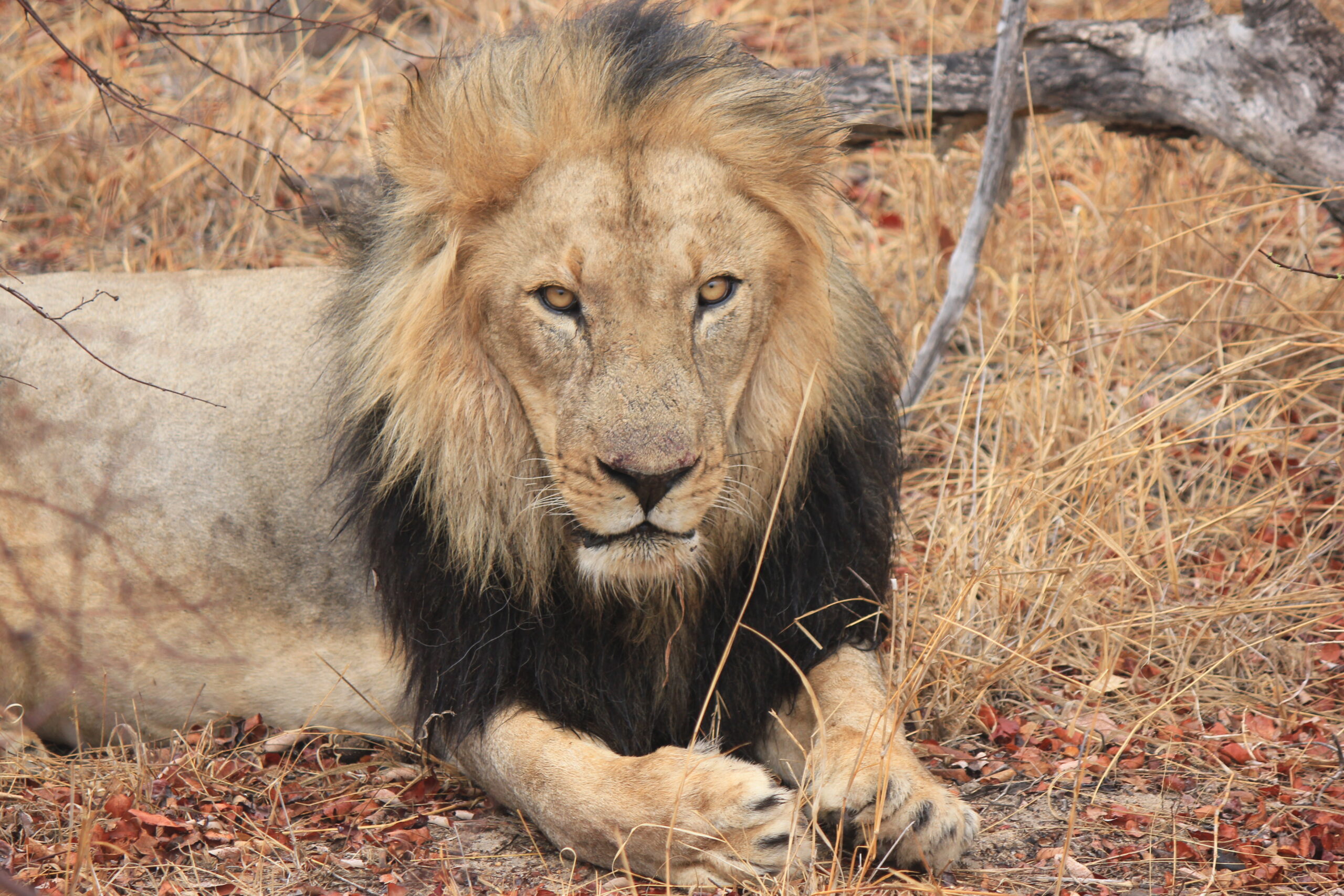
Surviving in the Wild
Life in the wild is challenging, even for these amazing animals.
Lion cubs face high mortality rates, with only about 50% surviving their first year due to starvation and predation.
Male lions often have shorter lifespans, typically 10-14 years, due to the constant battles for territory and dominance.
Lions rest for the majority of the day, conserving energy for hunting and other activities.
Similarly to household kitties, lions spend an impressive 16-20 hours lounging or sleeping – a testament to their energy-efficient lifestyles.
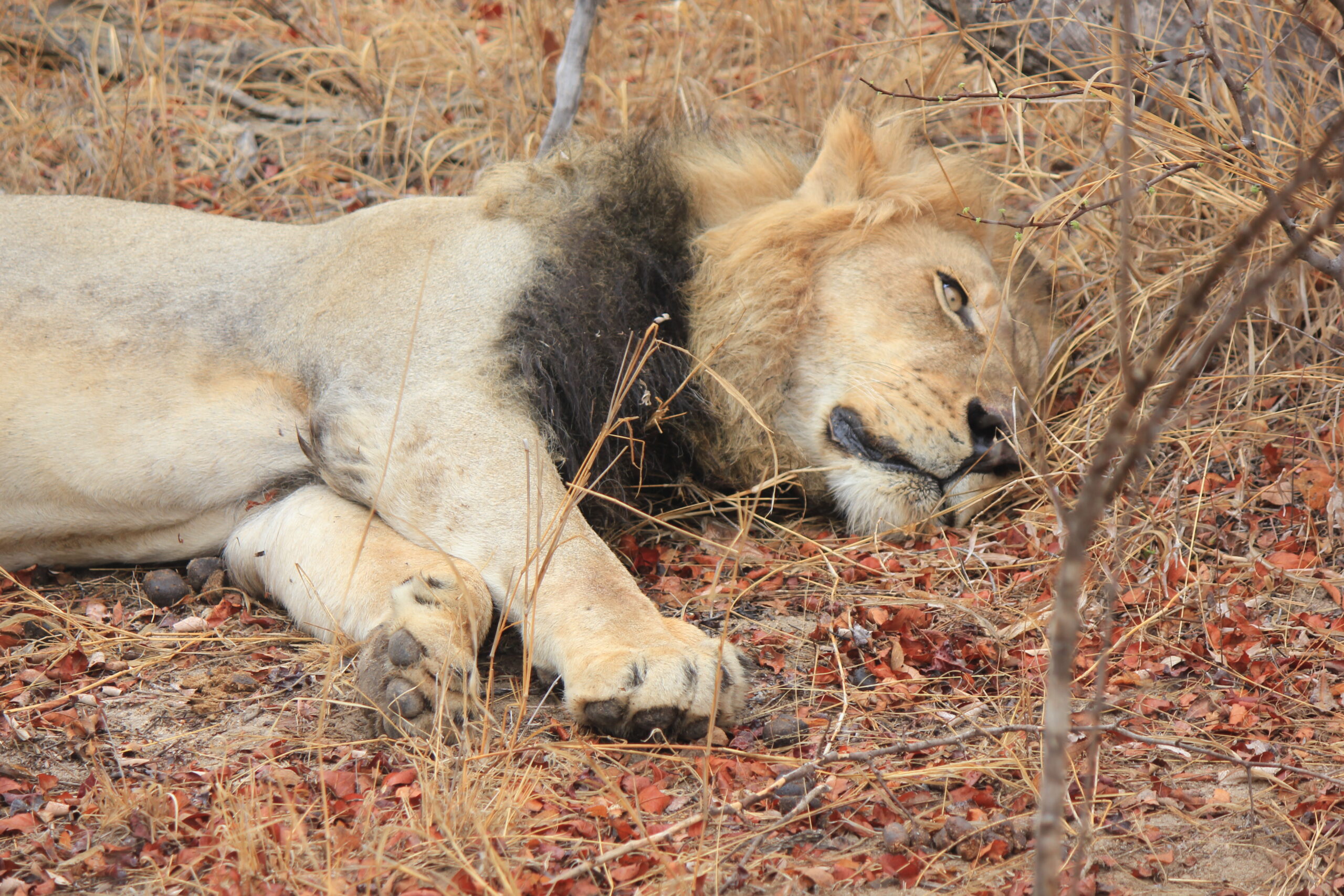
Threats and Conservation
Despite their position at the top of the food chain, lions face significant threats from humans.
Habitat loss, human-wildlife conflict, and sadly, poaching, have led to declining populations, particularly outside protected areas.
South African lions are classified as vulnerable, underscoring the need for ongoing conservation efforts.
Protected reserves and National Parks play a critical role in safeguarding lion habitats in South Africa.
Conservation initiatives focus on minimizing human-lion conflicts, combating poaching, and ensuring genetic diversity within lion populations.
Lions remain an enduring symbol of strength and resilience.
As conservation efforts continue to evolve, there is hope that future generations will inherit a world where these magnificent animals continue to roam freely across the bush of South Africa.
We can’t help your lion, but if you would like to learn how we can help your cat or your dog.
If you would like to learn how we can help your pet with safe surgery and anesthesia, please contact us through www.HRVSS.com
Never miss a blog by subscribing here: www.HRVSS.com/blog
Phil Zeltzman, DVM, DACVS, CVJ, Fear Free Certified
www.HRVSS.com
